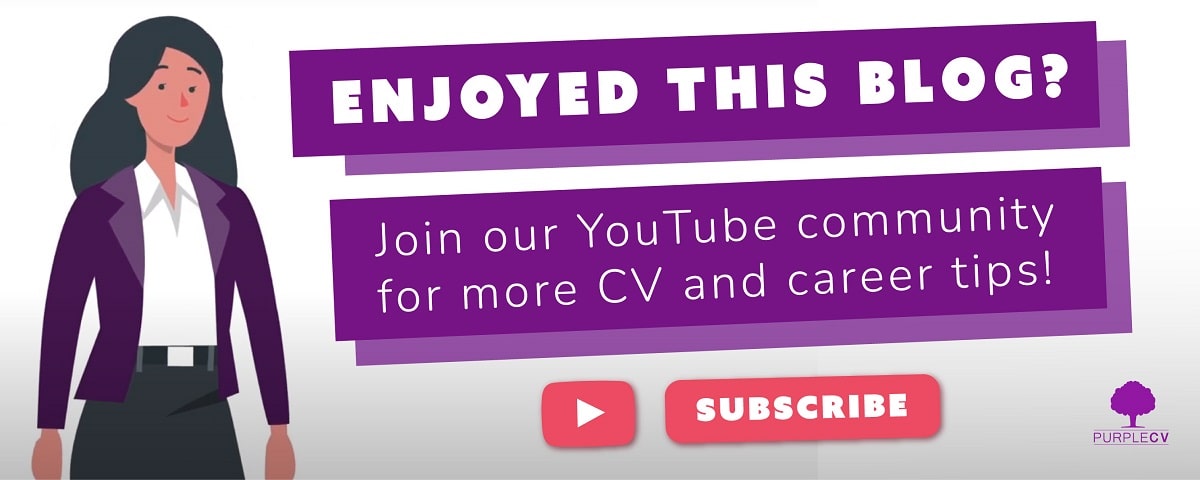So you’ve been in your role for a while, think it’s time to start applying for new jobs, take a look at the last version of your CV and then say to yourself… “Oh wow, I really need to update my CV, it’s so out of date!”
Sound familiar? Yep, many of us don’t update our CV until we start applying for our next job and when that time comes, it can look like a daunting task at first.
To get around this feeling, there’s an argument that you should update your CV every three months, even if you’re happy in your current role. Jeff Hyman – CEO of Recruit Rockstars – explains why in this interview with CNBC.
But it’s no problem at all if you don’t refresh your CV every 90 days. Read our ‘Update CV’ advice and guidelines below to find out how to tweak it efficiently and effectively for your next career move, in five simple steps.
Key takeaways: Updating your CV
- Regularly updating your CV helps you remember past accomplishments that can enhance your application
- For example, update your CV every 6 months at least to keep it ready for new job opportunities
- Removing outdated information from your CV improves its relevance and clarity
- Each time you update your CV, you should proofread it to eliminate any typos or errors
- Updating your CV after a promotion is important to reflect your new experience
#1 Summarise your most recent job
You’ll probably see on the last version of your CV that you summarised your last role with a few bullet points. Or perhaps lots of bullet points if there was plenty to shout about.
Assuming your CV is in reverse chronological order, your most recent job will go above your last one. But for now, if it would help, open up a separate Word or Google Doc and start writing some new bullet points to describe that role:
- What were your biggest successes or what impact did you have?
- What were your most impressive responsibilities?
Where possible use facts, figures or statistics to back up your claims.
Focus on getting across the key points of your new career since the last CV update first and foremost, without thinking too much about how much space you’re taking up just yet. There is a recency bias here – recruiters and hiring managers are often most interested in what you’ve done recently.
Want a full CV refresh or starting from scratch? Read our full guide – How to write a CV: A comprehensive guide.
#2 Add any new achievements
Hold on a second, you may be thinking… I’ve already written about my new achievements!
If you’re sure that’s the case, then great. Feel free to move onto the next step.
But some candidates have a separate Achievements section high up on their CV, separate from where they describe their role and responsibilities for each job. If that’s you, then split these out and update both sections.
Also, some of your most recent achievements may not be confined to where you’re describing your most recent role on the CV.
Have you obtained any new qualifications, completed any relevant courses, and so on?
You may have a Skills or Qualifications section on your CV – make sure you’ve updated these parts too. While you’re doing this, find out how to add certifications to your LinkedIn profile at the same time.
#3 Improve your personal statement
Re-read the last version of your personal statement. Does it still describe the best version of you, and what you have to offer?
Didn’t think so! Often there are one or two points from your old personal statement worth updating, perhaps with some of your more recent experiences and success stories.
This is the first thing recruiters and hiring managers will read, so make sure this top part of your CV is as impactful as possible.
For more details on how to do this, read our article on how to really sell yourself in your personal statement.
#4 Remove any lower priority details
Did you write those bullet points about your latest role in a separate document? If so, now’s the time to copy it over to your master CV.
Once that’s in there, above the previous role (for the reverse-chronological order format) you’ll probably find that your CV has now spilled onto a third page. So, how many pages should a CV be?
We usually recommend keeping your CV to two pages maximum, so you’ll need to address this. Start with page 2:
- If you’ve already been working for several years, some of the responsibilities and achievements you describe on this page may be less relevant by now.
- Either remove the superfluous bullet points completely – alternatively, just reduce the number of lines you use to describe previous roles or responsibilities.
See how far back a CV should go in this guide.
If you’ve edited down page 2 all you can, turn your attention to page 1. Is there a more concise way of making some of the points on this page?
Remember, quality not quantity. There’s always a way to strike the right balance between making impressive points and keeping your CV down to a couple of pages.
#5 Tailor your CV writing to the next opportunity
The last step but by no means the least important one is to have a plan in place to always tailor your CV to the job description. But what do we really mean by that?
- You need to tailor your CV to each job application for better chances of success
- Recruiters can easily distinguish between a generic and a tailored CV
- Many industry professionals recommend creating a different CV for every job application – creating a master copy, before duplicating your CV and making tweaks, can help you tailor it for different job applications efficiently
- A tailored CV highlights skills and experiences directly addressing the company’s requirements
- Some employers prefer CVs that include keywords from the job description
Think of the CV you’ve been working on so far as your master copy. Label it accordingly wherever you save it.
Let’s imagine you’re applying to job vacancies at five different companies. For each application, the CV you send should be slightly different… And in some cases, you may even make significant alterations.
There are some key principles here:
- Read the job description carefully
- Pick out keywords and phrases
- Research the company
- Put your most relevant experience first
- Make your overall experience fit
But when we say ‘make your overall experience fit’, never include any lies on your CV.
Please note that when sending these 5 different copies of your CV, you should give no indication that any of them are different to your master one.
In other words, don’t save them with a file name like ‘Joe Bloggs CV – Civil Service’ or anything like that. There’s no benefit to letting the employer know you’ve tailored your CV just for them.
For further reading, learn all about how many employers use ATS software. We’ve also covered how to optimise your CV for ATS software.
Update CV guidelines – final tips
Before you hit ‘send’ make sure you’ve checked the new CV thoroughly. This is particularly important after making any updates to your CV, in case you’ve caused a typo or messed up the formatting in the process.
Just because you’ve added something new to the CV and proofread that part, don’t assume that all of the previous text on there will be error-free by default.
Don’t just rely on a Word or Google Doc spell checker. Sometimes if you’ve used a correct word but in the wrong place, this won’t get picked up automatically.
Check, check and check again. Ideally, ask a friend or family member to proofread your CV too.
Finally, update your LinkedIn profile so that it’s consistent with your master CV.
We hope this guide will help you the next time you’re thinking “it’s time to update my CV!” For other helpful articles, browse through our blog.
Recently we’ve covered why an AI CV writer could harm your job search. It’s certainly not a very reliable way of updating your CV!
Our team of professional CV writers have a long history of creating outstanding, up-to-date CVs. We never use a CV template or generic online CV builder – everything we do is bespoke.
Our team of professional writers have a long history of creating outstanding, up-to-date CVs.
They know how to highlight your most relevant strengths, highlight recent experience and tailor a CV to the job advert you’re applying to.
To find out more about our CV writing service or for any queries, please contact our friendly team. We want to help you land your dream job!


